#Thom Enriquez
Text
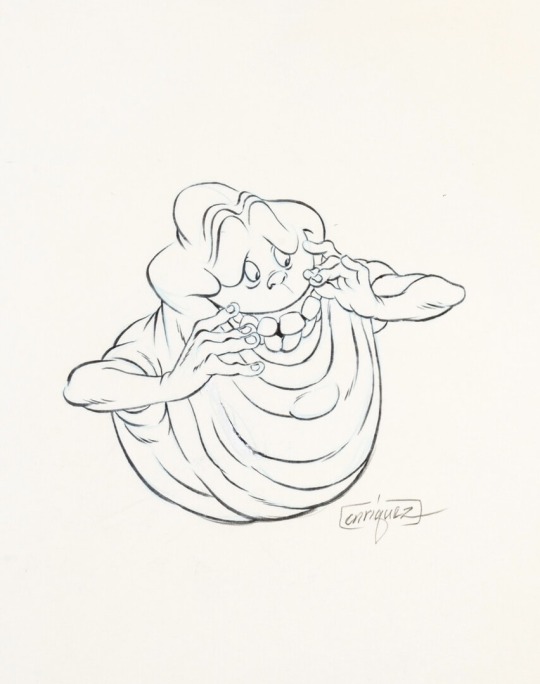



Slimer “Spud” Designs “Ghostbusters II” (1989)
#80s#columbia pictures#ghostbusters#sequel#ghostbusters 2#production art#character design#slimer#ghost#spud#Thom Enriquez
18 notes
·
View notes
Text


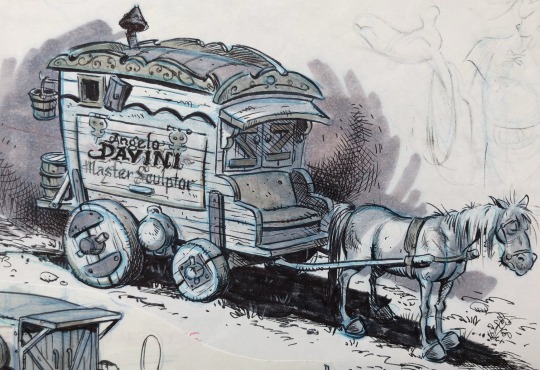


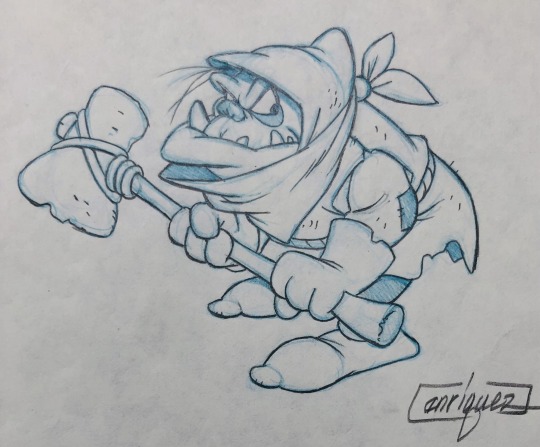

Thom Enriquez “Adventures of the Gummi Bears” Concept Artwork (1985)
16 notes
·
View notes
Text


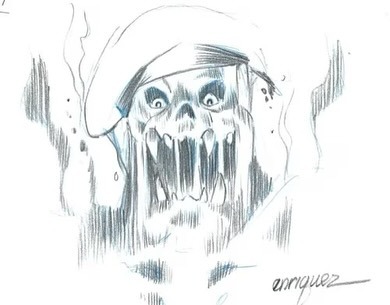
Stay-Puft's Demise Concept art by Thom Enriquez
7 notes
·
View notes
Photo

#Hercules 1997#Disney#Ron Clements#John Musker#Don McEnery#Bob Shaw#Irene Mecchi#Kaan Kalyon#Kelly Wightman#Randy Cartwright#John Ramirez#Jeff Snow#Vance Gerry#Kirk Hanson#Tamara Lusher#Francis Glebas#Mark Kennedy#Bruce Morris#Don Dougherty#Thom Enriquez#90s
98 notes
·
View notes
Text
The L. A. Bastards
I’ve mentioned several times in the past the phenomenal talent pool that coalesced around Ruby-Spears Productions in their heyday, in particular their storyboard department, led by the truly sui generis John Dorman, one of Hollywood’s genuine wild men.
Not only was John an amazing talent in his own right, but his Rolodex included some of the most incredible talents it’s been my pleasure to work with: Kurt Conner, Thom Enriquez, Larry Houston, Tom Minton, Dan Riba, Hank Tucker, Jim Woodring, and a host of others at various times and on various productions.
John ran an effective art crew, and I learned many things from him that proved invaluable in dealing with my own art crews when I was packaging books and educational material.
John and his team always delivered top notch work in a timely manner, often going above and beyond the call of duty to get it out the door on time.
But John did not run a tight ship.
Oh, no, quite the contrary…
They called themselves the L.A. Bastards and the storyboard department was Bastard Central.
I’m proud to say that I was the only non-storyboard artist admitted into that freaky fraternity. I won their respect by being the only writer who actually went down and talked to them about what would make their jobs easier when I wrote scripts.
They appreciated that and opened the window to all sorts of insider tips I never would have gleaned without their insight.
Whenever possible I’d go down to John’s department and recharge my batteries. It wasn’t a 24-hour party, but it was a constantly fun environment, and everybody enjoyed themselves making cartoons so much that the love just poured out onto their storyboards.
But they were a handful.
Let’s say “chemically enhanced”
and let it go at that.
One of the legal enhancements I can discuss were the mini-oxygen tanks John kept for himself and his crew. You felt yourself dragging in the middle of the afternoon, just come on down and get a couple of hits off the old 02 tank and you were fully energized in a matter of seconds.
Classic John Dorman chemical enhancement story:
At one of the buildings Ruby-Spears used as a studio, John’s office was down wind from the ink and paint department’s restroom; anything that entered the air vent there would exit in John’s office.
You’d walk in and swear you just stepped into some Haight-Ashbury hippie pad in the middle of the Summer of Love. John would swear it wasn’t him, but the smell of marijuana remained so overpowering you could almost get high standing there.
Ken Spears eventually went into John’s office and told him that he and Joe didn’t mind what he did on his own time, but for the luvva gawd, stop toking up in the middle of the workday.
“But it’s not me!” John would wail.
And it wasn’t! The ink and paint ladies, bored out of their minds slapping paint on Mighty Man and Yukk cels, would take smoke breaks in the ladies’ room and as mentioned above, the purple haze would find its way into John’s office.
John and his crew were merry pranksters, notorious for their wild antics in and out of the studio. They used to like flamingoing people’s lawns, buying dozens of cheap pink flamingos at a big box store and covering somebody’s lawn with them.
Their antics finally got to be too much for the suits in the front office to bear so Joe and Ken moved the L.A. Bastards out of the studio and into their own space, the former offices of Cheech y Chong.
If ever there was a perfect match of location and occupants, that was it.
Most of the stuff John and the L.A. Bastards did never went into production, development art for shows that went nowhere. At one time we did a development on Prince Valiant, a large full size artboard showing Prince Valiant astride his mighty steed.
Only something went wrong
in the inking of the horse.
Joe and / or Ken got a look at the art when it was halfway inked, realized it would not fly and by that time apparently already got a signal from the network that Prince Valiant was way down beneath the floor tiles in the sub-basement of possible shows.
So the incomplete art remained behind John’s desk after that. They copied and enlarged the horse’s head, dubbing it Widowmaker, and made T-shirts with it proudly proclaiming themselves The 5-Hours For Lunch Club.
Not an exaggeration.
In any case, when I left Ruby-Spears I stayed in touch with John but never found out what happened to Widowmaker. Fortunately for us, Dan Riba scanned a copy of the Prince Valiant art, so here Widowmaker is, in all their pagan glory.
Gawd, I miss you, John…
© Buzz Dixon
#animation#Saturday morning animation#storyboards#storyboarding#L A Bastards#Bastard Central#Kurt Conner#Thom Enriquez#Larry Houston#Tom Minton#Dan Riba#Hank Tucker#Jim Woodring#Ruby-Spears#Joe Ruby#Ken Spears
1 note
·
View note
Text

Concept art by Thom Enriquez for the Terror Dogs in Ghostbusters
4 notes
·
View notes
Text
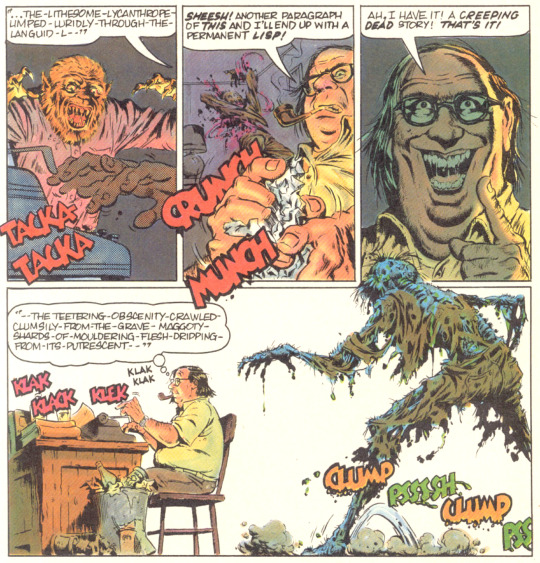

Twisted Tales #9 by Thom Enriquez
54 notes
·
View notes
Photo

Concept art by Thom Enriquez for the never made sequel
94 notes
·
View notes
Text
Episode 130 - Battle of the Books 2021
This episode it’s the first part of our 2021 Battle of the Books! We’re each pitching a book that we think we should all read and discuss, and you get to decide which one we read! We talk about pombies, wooden book clubs, friendship, and more! Plus: Digressions about superheroes!
You can download the podcast directly, find it on Libsyn, or get it through Apple Podcasts, Stitcher, Google Podcasts, Spotify, or your favourite podcast delivery system.
In this episode
Anna Ferri | Meghan Whyte | Matthew Murray | RJ Edwards
Which book should we all read?
I Hope We Choose Love: A Trans Girl's Notes from the End of the World by Kai Cheng Thom
Hench by Natalie Zina Walschots
Piranesi by Susanna Clarke
Things We Lost in the Fire: Stories by Mariana Enriquez
Vote for which book you’d like us all to read
Vote!
Our Shortlists
RJ’s Shortlist
Upright Women Wanted by Sarah Gailey
Golem Girl: A Memoir by Riva Lehrer
The Unspoken Name by A. K. Larkwood
Riot Baby by Tochi Onyebuchi
Circe by Madeline Miller
A Mind Spread Out on the Ground by Alicia Elliott
Something That May Shock and Discredit You by Daniel M. Lavery
Meghan’s Shortlist
The Ten Thousand Doors of January by Alix E. Harrow
The Midnight Library by Matt Haig
The Book of Speculation by Erika Swyler
A Memory Called Empire by Arkady Martine
Black Leopard, Red Wolf by Marlon James
Wanderers by Chuck Wendig
The Priory of the Orange Tree by Samantha Shannon
Anna’s Shortlist
Braiding Sweetgrass: Indigenous Wisdom, Scientific Knowledge, and the Teachings of Plants by Robin Wall Kimmerer
The House in the Cerulean Sea by TJ Klune
Media We Mentioned
The Fifth Season by N.K. Jemisin
Pet by Akwaeke Emezi
Fierce Femmes and Notorious Liars by Kai Cheng Thom
Jonathan Strange & Mr Norrell by Susanna Clarke
Dr. Strange and Mr. Norrell
The Ladies of Grace Adieu and Other Stories by Susanna Clarke
Loki (TV series) (Wikipedia)
Her Body and Other Parties by Carmen Maria Machado
Links, Articles, and Things
Episode 079 - Which Book Should We Read?
Episode 083 - The Fifth Season
Episode 103 - Battle of the Books 2020
Episode 107 - Pet by Akwaeke Emezi
Dear Prudence
Shirley Jackson (Wikipedia)
The Shirley Jackson shirt RJ was wearing
Arsenal Pulp Press
Hark! Podcast
Mangasplaining
Canada Reads (Wikipedia)
Spider-Man (Wikipedia)
Peter Parker (Marvel Cinematic Universe) (Wikipedia)
Miles Morales (Wikipedia)
Ben Reilly (Wikipedia)
The New 52 (Wikipedia)
Giovanni Battista Piranesi (Wikipedia)
Imaginary Prisons (Wikipedia)
Wyvern (Wikipedia)
Sixties Scoop (Wikipedia)
Canadian Indian residential school system (Wikipedia)
Cultural genocide (Wikipedia)
1976 Argentine coup d'état (Wikipedia)
15 Spy/Espionage books by Authors of Colour
Every month Book Club for Masochists: A Readers’ Advisory Podcasts chooses a genre at random and we read and discuss books from that genre. We also put together book lists for each episode/genre that feature works by POC (People of Colour) authors to help our listeners diversify their readers’ advisory. All of the lists can be found here. This is our retrospective book list for Episode 012 - Spies & Espionage.
Benita Renee Jenkins: Diva Secret Agent by Lorisa Bates
A Hope Divided : A Novel of the Civil War by Alyssa Cole
A Spy in the Struggle by Aya de Leon
Spy x Family by Tatsuya Endo, translated by Casey Loe
Gentlemen Formerly Dressed by Sulari Gentill
A Map of Betrayal by Ha Jin
Your Republic Is Calling You by Young-Ha Kim, translated by Chi-Young Kim
The Starlet and the Spy by Ji-Min Lee, translated by Chi-Young Kim
A Spy in the House by Y.S. Lee
The Sympathizer by Viet Thanh Nguyen
Quotients by Tracey O’Neill
The Strivers' Row Spy by Jason Overstreet
Open House by Nabil Saleh
Impostor Syndrome by Kathy Wang
American Spy by Lauren Wilkinson
Give us feedback!
Fill out the form to ask for a recommendation or suggest a genre or title for us to read!
Check out our Tumblr, follow us on Twitter or Instagram, join our Facebook Group, or send us an email!
Join us again on Tuesday, August 3rd it’s time to jack in and download because we’ll be reading the genre of Cyberpunk!
Then on Tuesday, August 17th it’s time for another of our episodes in which we discuss books, movies, and other media we consume that aren’t for the podcast!
4 notes
·
View notes
Text
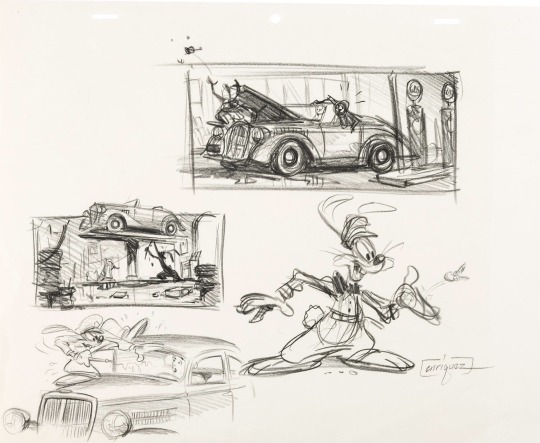

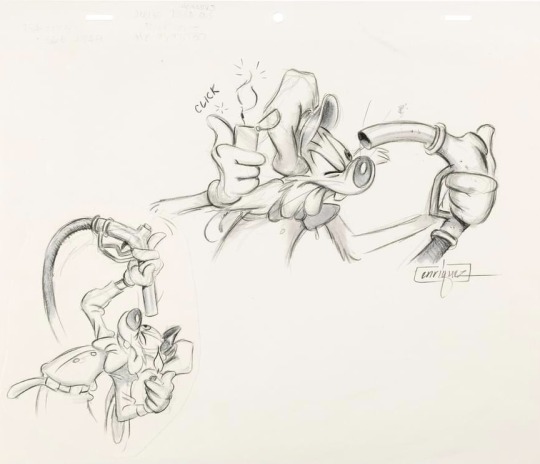
Full Rabbit Service
Concept art from the never-produced “Who Discovered Roger Rabbit”…
#90s#concept art#development art#character design#concept sketch#who discovered roger rabbit#sequel#gas station#1930s#period film#hybrid film#roger rabbit#thom enriquez#never produced#unproduced
60 notes
·
View notes
Photo
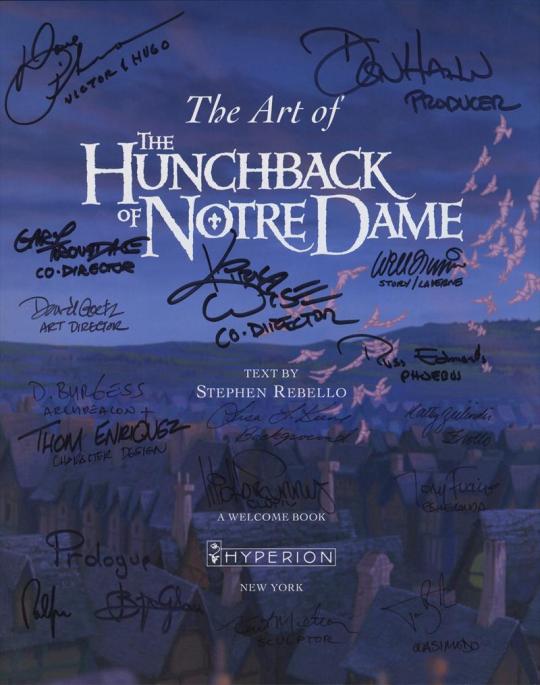
The Art of the Hunchback of Notre Dame by Stephen Rebello signed by seventeen of the artists who produced the film:
Gary Trousdale, director
Kirk Wise, director
Dave Pruiksma, supervising animator
James Baxter, supervising animator
Russ Edmonds, supervising animator
Michael Surrey, supervising animator
Tony Fucile, supervising animator
David Burgess, supervising animator
Kathy Zielinski, supervising animator
Lisa Keene, background supervisor
Gaetan Brizzi, sequence director, story
Paul Brizzi, sequence director, story
Thom Enriquez, character design
Kent Melton, sculptor
Don Hahn, producer
David Goetz, art director and
Will Finn, story supervisor, story, supervising animator.
37 notes
·
View notes
Photo
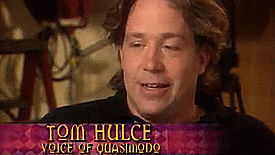
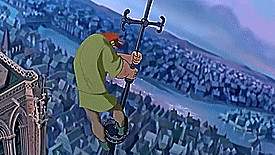

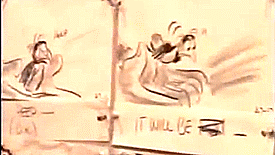
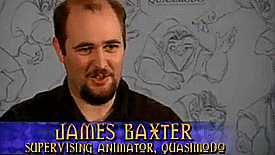

The Art of the Hunchback of Notre Dame:
Quasimodo (link) | Esmeralda (link) | Frollo (link) | Phoebus (link) | Clopin (link)
The Misshapen Bell-ringer
The character and his journey from oppression to freedom aroused empathy in many key contributors to the project. Marshall Toomey, the cleanup key for the character and an African-American, asserts, “I’ve lived Quasimodo’s life. I was one of the first people to get bussed in the early 1960s. I got called all kinds of names. I felt so inferior and so ugly. I know what’s in Quasimodo’s heart because of what I’ve been through in my life.” Writer Noni White asserts, “Someone once said that anti-Semitism is a light sleeper. All bigotry is a light sleeper. Because Quasimodo and the [Romani] are outcasts, the story touches a universal theme: Why can’t we see each other as human beings and not judge one another based on looks, beliefs, or race?”
Full write-up behind Read-More
Taking that step forward required the filmmakers to extract the essence of some of literature’s more memorable and sharply etched characters Hugo evokes Quasimodo, for instance, as “a giant broken in pieces and badly reassembled,” with “a huge head sprouting red hair; between the two shoulders an enormous hump, the repercussions of which were evident at the front; a system of thighs and legs so strangely warped that they met only at the knees and looked, from the front, like two scythe-blades joined at the handle; broad feet and monstrous hands.” Still, beneath the surface, “There was a radiance about that somber and unhappy face.”
In the novel Quasimodo may be viewed as a symbol of the unacknowledged evil of his guardian, Claude Frollo, as well as a scapegoat for the fears and superstitions of the medieval populace. Yet the Disney filmmakers saw that behind these misconceptions lay another Quasimodo entirely. Observes concept artist Jean Gillmore, “Quasimodo was limited not so much by his own physical restrictions as by people’s opinions of him. People of that time feared anything out of the ordinary, and Quasimodo embodied those fears, fuelled by the superstitions and dogma of the church. To them something that hideous on the outside must also be hideous inside.”
Rather than dwell solely on the physical qualities of the character, whom Hugo variously describes as “a living chimera,” and “hunchbacked, one-eyed, and lame,” and with a “dome for a back and twisted columns for legs,” the Disney moviemakers chose to dramatize Quasimodo’s internal struggle with the shame, insecurities, and self-loathing Frollo has created in him. Don Hahn, who previously produced Beauty and the Beast and The Lion King before being asked to produce The Hunchback of Notre Dame, views Quasimodo as “an abused child who has to struggle far less with his physical challenges than with the huge oppression of being told by his father figure, Frollo, that he is a monster, a freak unfit to venture out into the world.” Kirk Wise terms the relationship of Quasimodo and Frollo “classically dysfunctional. Frollo constantly reminds Quasimodo of how ugly, how worthless, he is and whenever the poor kid gets his hopes up, Frollo smashes them down. It’s almost like some insidious form of brainwashing that keeps Quasimodo in a trance.”
The moviemakers determined that their Quasimodo should hew close to the age Hugo ascribes to him, about twenty, rather than the fortyish man he appears to be in previous film versions. The choice lends him an innocent appeal. Hugo’s conception that Quasimodo was “vicious in fact because he was anti-social; he was anti-social because he was ugly” evolved in the filmmakers’ minds to a more modern conceit. Gary Trousdale maintains that it was crucial for Quasimodo to not be “malevolent, bitter, and vicious, but a put-upon guy who, beneath his surface appearance and his being emotionally stunted, has a loving heart of gold.” “It’s not so much how much he looks, it’s a really his inner soul trying to break free,” concurs Kirk Wise.
No Disney animated character, from Mickey Mouse to Captain John Smith or from Snow White to Pocahontas, has sprung easily into existence. Few could have presented more challenges than Quasimodo, whose transcendent spirit can be glimpsed only be those willing to see beyond his unconventional outward appearance. Key decisions were required as to how he would look and move, and how great his physical challenges should be. It had been suggested, for instance, that half his face might be deformed, but hidden under a cascade of beautiful hair. The filmmakers vetoed that notion because, as writer Bob Tzudiker put it, “This is a story of someone who must overcome his perception of his own deformity. If we hid his deformity, we’d be avoiding telling the story.” Many of the Studio’s most gifted artists – among them Joe Grant, Burny Mattinson, Ed Gombert, Jean Gillmore, Thom Enriquez, Rick Maki, Geefwee Boedoe, Kevin Harkey, James Baxter, and Rowland Wilson – created prototypical inspirational approaches to the character that ranged from nightmare creatures to singular-looking boys. In the end, a blend of the designs of illustrator Peter DeSeve, whose surrealistic style is perhaps known best from his New Yorker work, and animator James Baxter, best known for his work on Beauty and the Beast and The Lion King, were chosen to balance Hugo’s Quasimodo with Disney’s. From the first moment Quasimodo appears on screen, lovingly urging a hesitant, frightened young pigeon to at last fly free of Notre Dame, the character, as animated by Baxter, appears sympathetic, psychologically battered, winsome, a full-hearted and appealing underdog. “James Baxter’s animation of Quasimodo is so moving, that it’s easy to forget that the performance as created with a pencil and paper,” producer Don Hahn says. “The energy from his animation is something audiences can feel when they look at the screen.”
Baxter designed Quasimodo with a stress on horizontal shapes rather than vertical ones. Says Baxter, “His shape contrasts deliberately with the other major characters, especially Frollo, who is very tall and Gothic. Frollo seems to fit in with the Gothic architecture while Quasi doesn’t.” Despite Quasimodo’s physical appearance, he had to be designed to be very adept and active. “He’s deformed but not disabled,” says Baxter. “His being bent over was a metaphor for his wanting to hide. We wanted him wrapped in on himself, able to bend over and cower in his most oppressed moments.”
The artists of the layout, background and effects departments worked to create an environment for Quasimodo which reflected his character and his moods. Psychologically, the cathedral is, in Baxter’s words, “Quasi’s comfort zone. When he’s on his own or with the gargoyles he’s at ease; it’s very different from when he’s in the square.” Says head of layout Ed Ghertner, “There are places in the belltower where Quasimodo has all these found and manufactured objects and they really tell you a lot about who he is, what his preoccupations are.” As the movie progresses the color and environment change subtly to suggest changes in Quasi’s mood. “Though his environment starts out cold, it becomes warmer when he shows his space to Esmeralda and magical and ethereal when he dreams of heaven’s light,” says head of backgrounds Lisa Keene.
It is through his relationship with another element of the cathedral, the gargoyles Hugo, Victor, and Laverne, that the directors chose to reveal an important aspect of Quasimodo’s character. Voiced by Jason Alexander, Charles Kimbrough, and Mary Wickes, respectively (Jane Withers took on the role of Laverne after Mary Wickes passed away in October 1995), “the gargoyles help us see the warm and funny side of Quasi that shuts down when Frollo’s around,” says Gary Trousdale. “Not only does this add humour and lightness to the film, it shows an aspect of his character you wouldn’t otherwise see, an aspect that he isn’t allowed to express to others.”
The character and his journey from oppression to freedom aroused empathy in many key contributors to the project. Marshall Toomey, the cleanup key for the character and an African-American, asserts, “I’ve lived Quasimodo’s life. I was one of the first people to get bussed in the early 1960s. I got called all kinds of names. I felt so inferior and so ugly. I know what’s in Quasimodo’s heart because of what I’ve been through in my life.” Writer Noni White asserts, “Someone once said that anti-Semitism is a light sleeper. All bigotry is a light sleeper. Because Quasimodo and the [Romani] are outcasts, the story touches a universal theme: Why can’t we see each other as human beings and not judge one another based on looks, beliefs, or race?”
To voice and sing the character, Tom Hulce, an Oscar nominee for his role as Mozart in Amadeus, was, according to coproducer Roy Cohn, “the guy as soon as we heard him sing because he has this wonderful, innocent quality to his voice, yet it still has the kind of power and depth you’d expect from Quasimodo.” Hulce got put to the test on “Out There,” the song written for Quasimodo by composer Alan Menken and lyricist Stephen Schwartz in which the character’s feelings well up, compelling him to express his longing for one sing day amid the throngs he watches from the distant heights of the belltower:
All my life I wonder how it feels to pass a day,
Not above them,
But part of them…
For Gary Trousdale, the song “defines Quasimodo as a yearning, child-like guy watching life pass him by from the belltower, as frustrated as anyone might be if the Tournament of Roses Parade or Macy’s Thanksgiving Day Parade passed by your window, but you could never go.” Victor Hugo probably never imagined his malformed, melancholy creation breaking forth into song. Yet, Baxter’s animation, Menken’s melody, and Schwartz’s lyrics speak powerfully of the character’s lonely isolation, oppression, and feeling of being an outsider.
#the hunchback of notre dame#hunchback of notre dame#mickeyandcompany#quasimodo#frollo#esmeralda#phoebus#clopin#disney#concept art#hunchback disney
198 notes
·
View notes
Photo


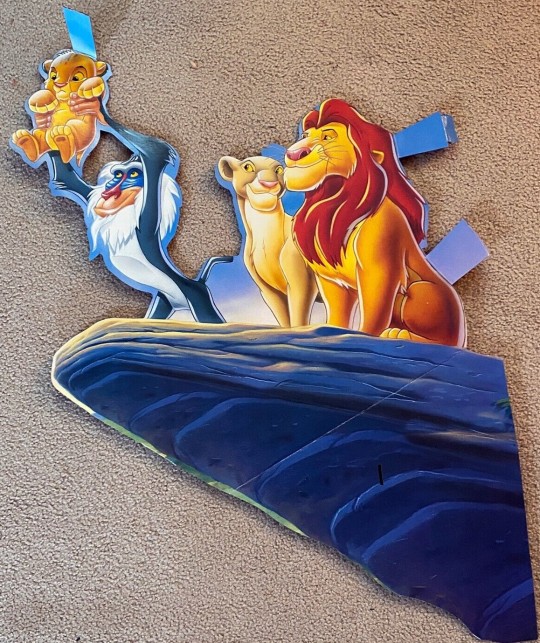


#The Lion King#Disney#Roger Allers#Rob Minkoff#Irene Mecchi#Jonathan Roberts#Linda Woolverton#Burny Mattinson#Barry Johnson#Lorna Cook#Thom Enriquez#Andy Gaskill#Gary Trousdale#Jim Capobianco#Kevin Harkey#Jorgen Klubien#Chris Sanders#Tom Sito#Larry Leker#Joe Ranft#Rick Maki#Ed Gombert#Francis Glebas#Mark Kausler#J.T. Allen#George Scribner#Miguel Tejada Flores#Jenny Tripp#VHS#90s
42 notes
·
View notes